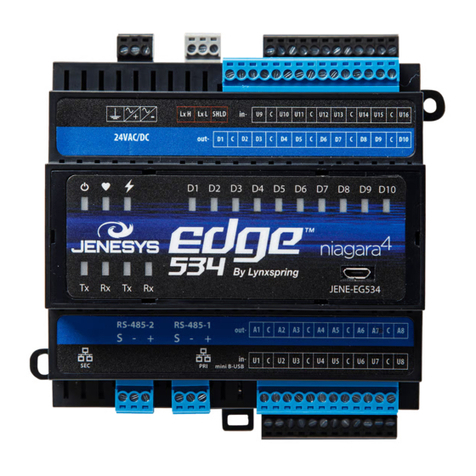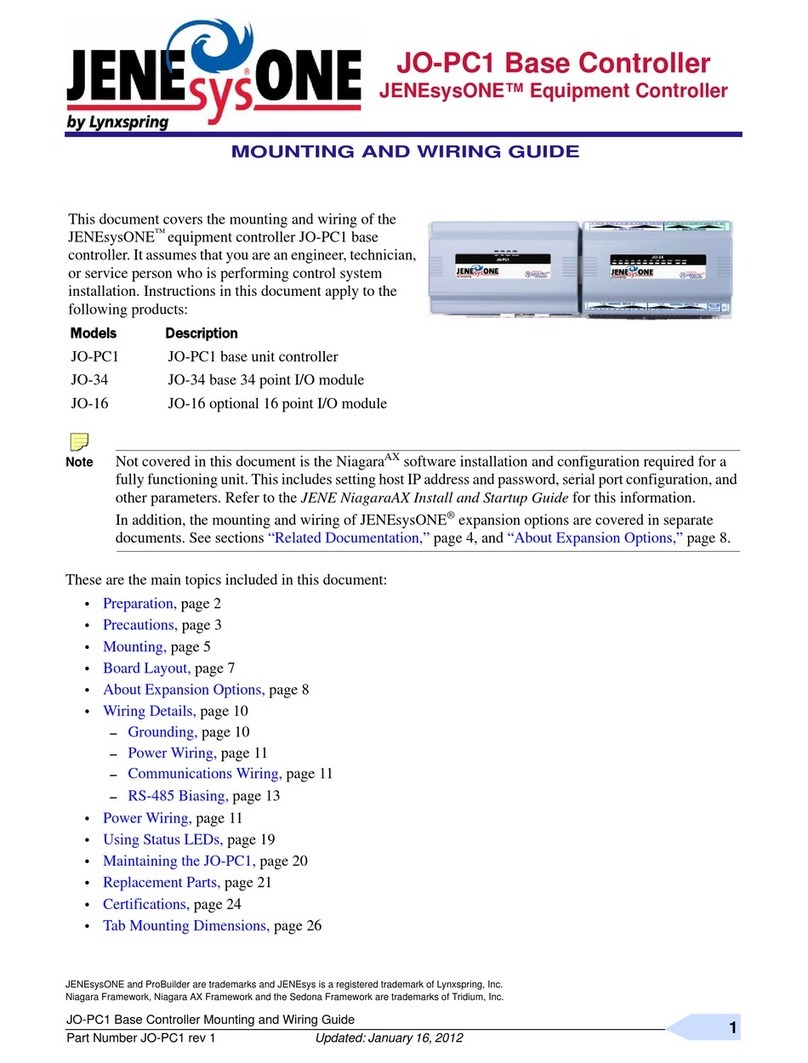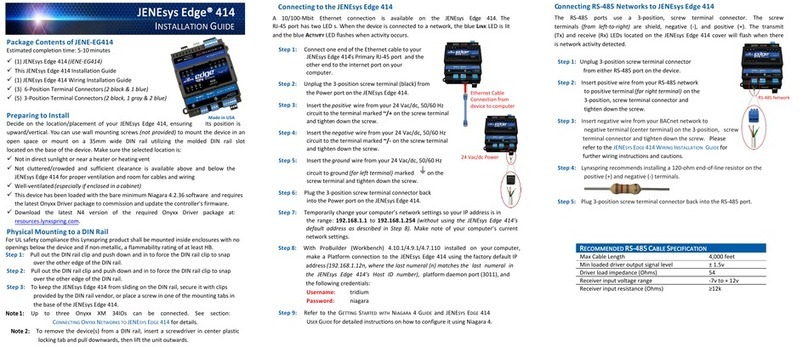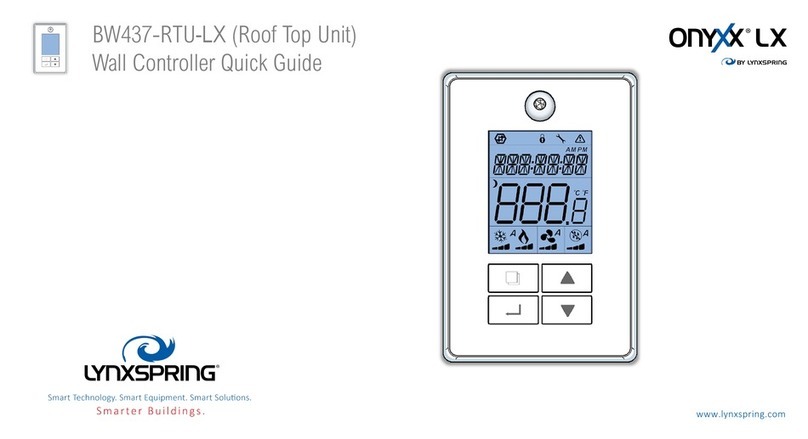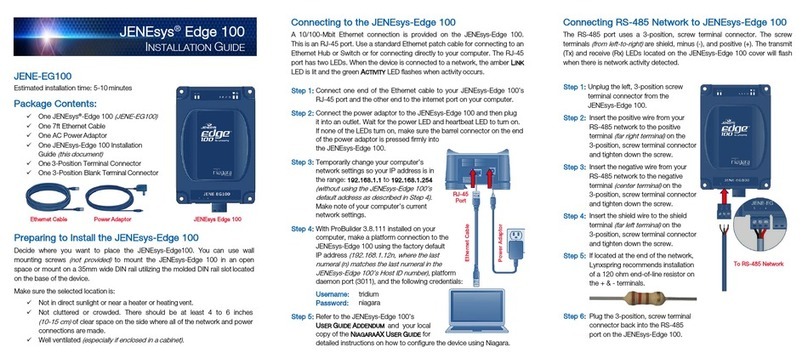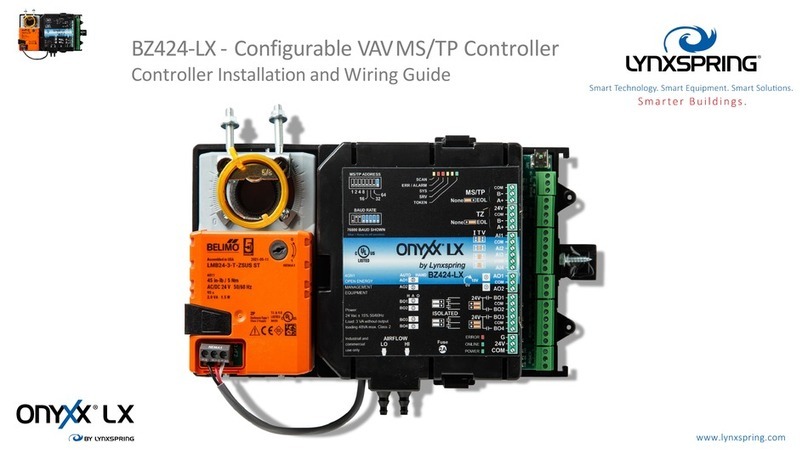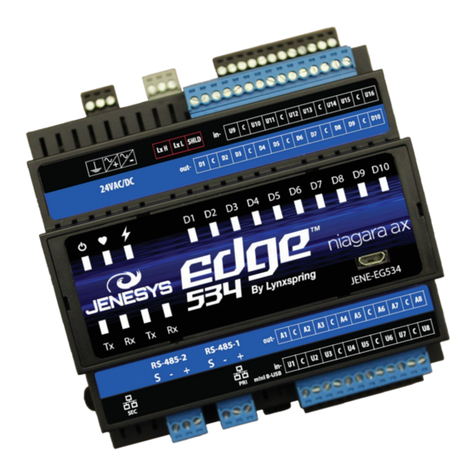
BACnet MS/TP, TZ Comm Bus, and Power wiring
24VAC Supply
B
A
AI
AO
BO
Cable shield connection (Refer to RS485
network guidelines for proper wiring)
24 VAC
COM
TZ100
B
ABACnet MS/TP
B
ABACnet MS/TP
PO WER B IN ARY OU TPU TS ANA LOG OU T ANALOG INPU T
Tzone
BACnet
MS / TP
The BZ122 is powered using a
Class 2, 24Vac transformer,, do not
ground either side of the
transformer’s secondary
WARNING: Internally, this device utilizes a half-wave rectifier
and therefore can only share the same AC power source with
other half-wave rectified devices. Sharing AC power with full
wave rectified devices is NOT recommended. If not properly
wired, connecting controllers on an MSTP BACnet network
that have internal full wave rectifier controllers with Onyxx LX
half-wave controllers can have adverse effect on network
communications and in some cases would result in damaging
the Onyxx LX Controllers. Not properly wiring the devices will
void the warranty.
For maximum protection from
electrostatic discharge or other
forms of EMI connect each
controller to earth ground using a
#16 AWG and keep these wires as
short as possible.
Proper grounding of a controller is
important to ensure a high probability of
surviving a nearby lightning strike as well as
other possible electrical surges.
For details on
grounding within control
panels, NFPA 79 and
UL508A provide the
required details.
www.lynxspring.com
